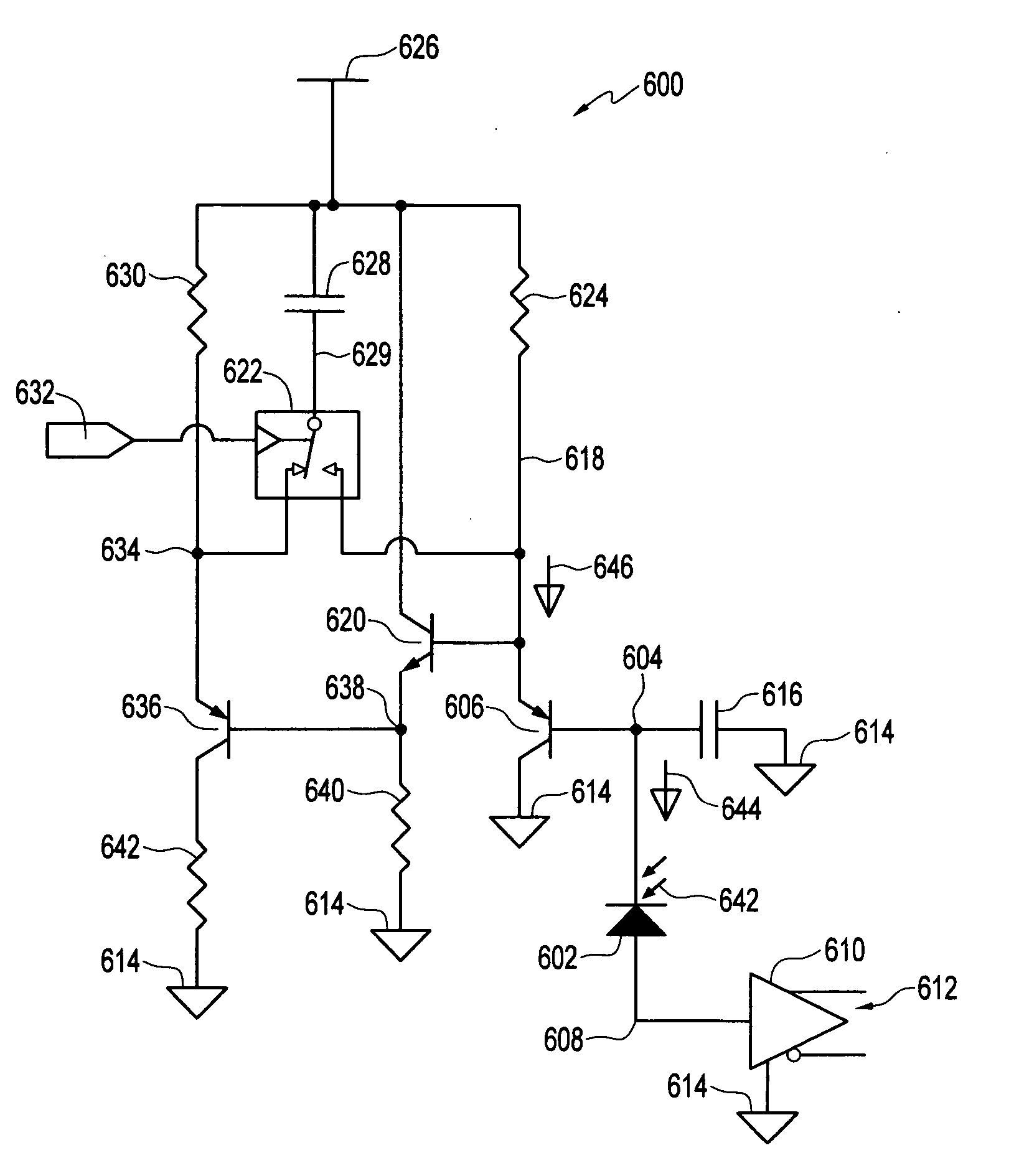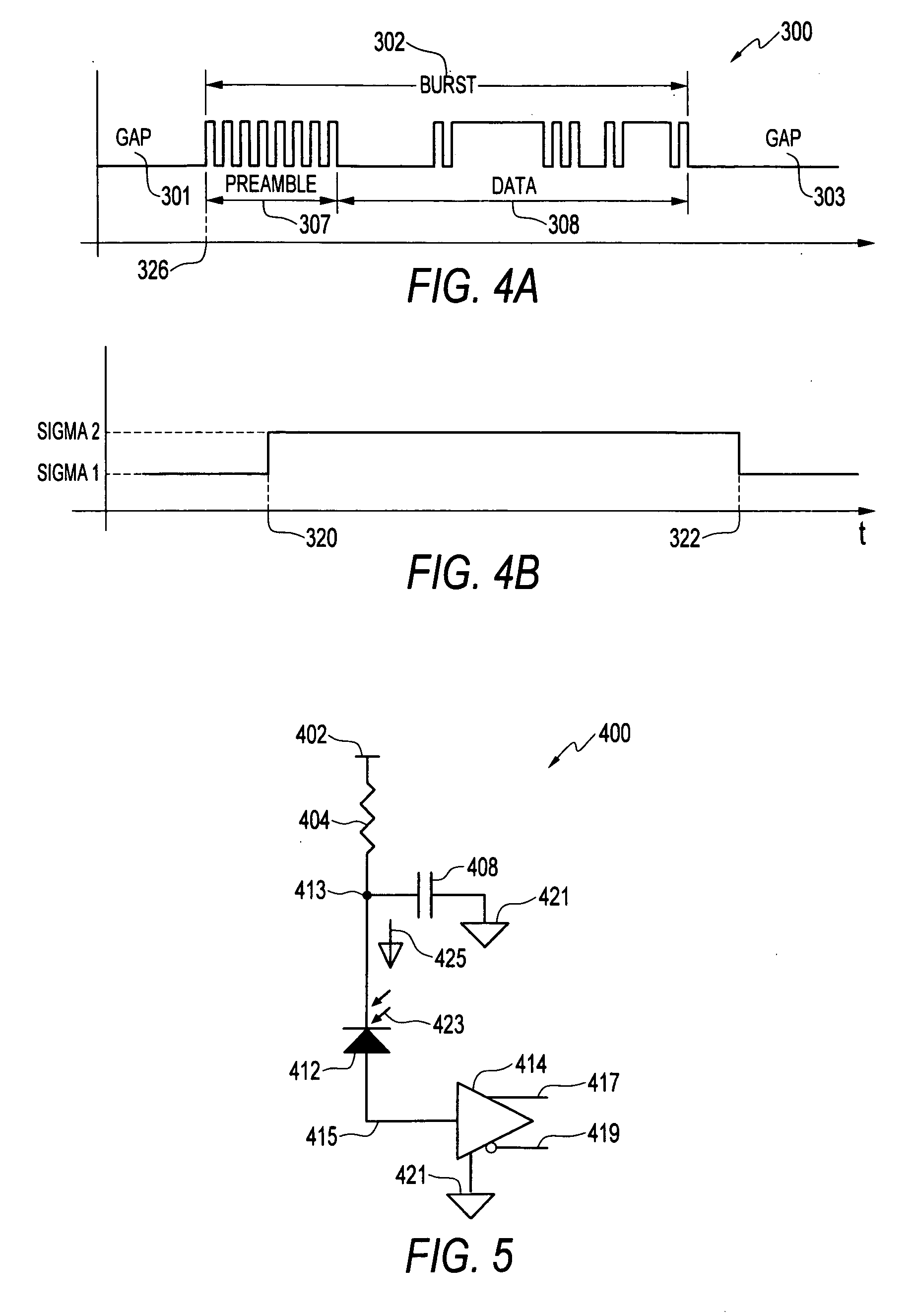Automatic gain control
a gain control and automatic technology, applied in the field of data communication systems and methods, can solve the problems of special problems of automatic gain control, burst mode data transmission poses challenges to maintaining signal gain control, and inhibit effective data communication, so as to improve receiver sensitivity and responsiveness, and reasonable cost
- Summary
- Abstract
- Description
- Claims
- Application Information
AI Technical Summary
Benefits of technology
Problems solved by technology
Method used
Image
Examples
Embodiment Construction
[0041] The following description is provided to enable a person of ordinary skill in the art to make and use the disclosed inventions and sets forth the best modes presently contemplated by the inventors for carrying out their inventions. In the following description, for purposes of explanation, numerous specific details are set forth in order to provide a thorough understanding of the described inventions. It will be apparent to one skilled in the art, however, that the inventions may be practiced without these specific details. In other instances, structures and devices are shown in block diagram (or otherwise simplified) form for clarity of presentation.
[0042] In the following discussion, the singular term “signal” and plural term “signals” are used interchangeably and are to be understood as including analog or digital information, at a single frequency or a plurality of frequencies, and may or may not include coding, modulation, sideband information, or other features of sign...
PUM
 Login to View More
Login to View More Abstract
Description
Claims
Application Information
 Login to View More
Login to View More - R&D
- Intellectual Property
- Life Sciences
- Materials
- Tech Scout
- Unparalleled Data Quality
- Higher Quality Content
- 60% Fewer Hallucinations
Browse by: Latest US Patents, China's latest patents, Technical Efficacy Thesaurus, Application Domain, Technology Topic, Popular Technical Reports.
© 2025 PatSnap. All rights reserved.Legal|Privacy policy|Modern Slavery Act Transparency Statement|Sitemap|About US| Contact US: help@patsnap.com



